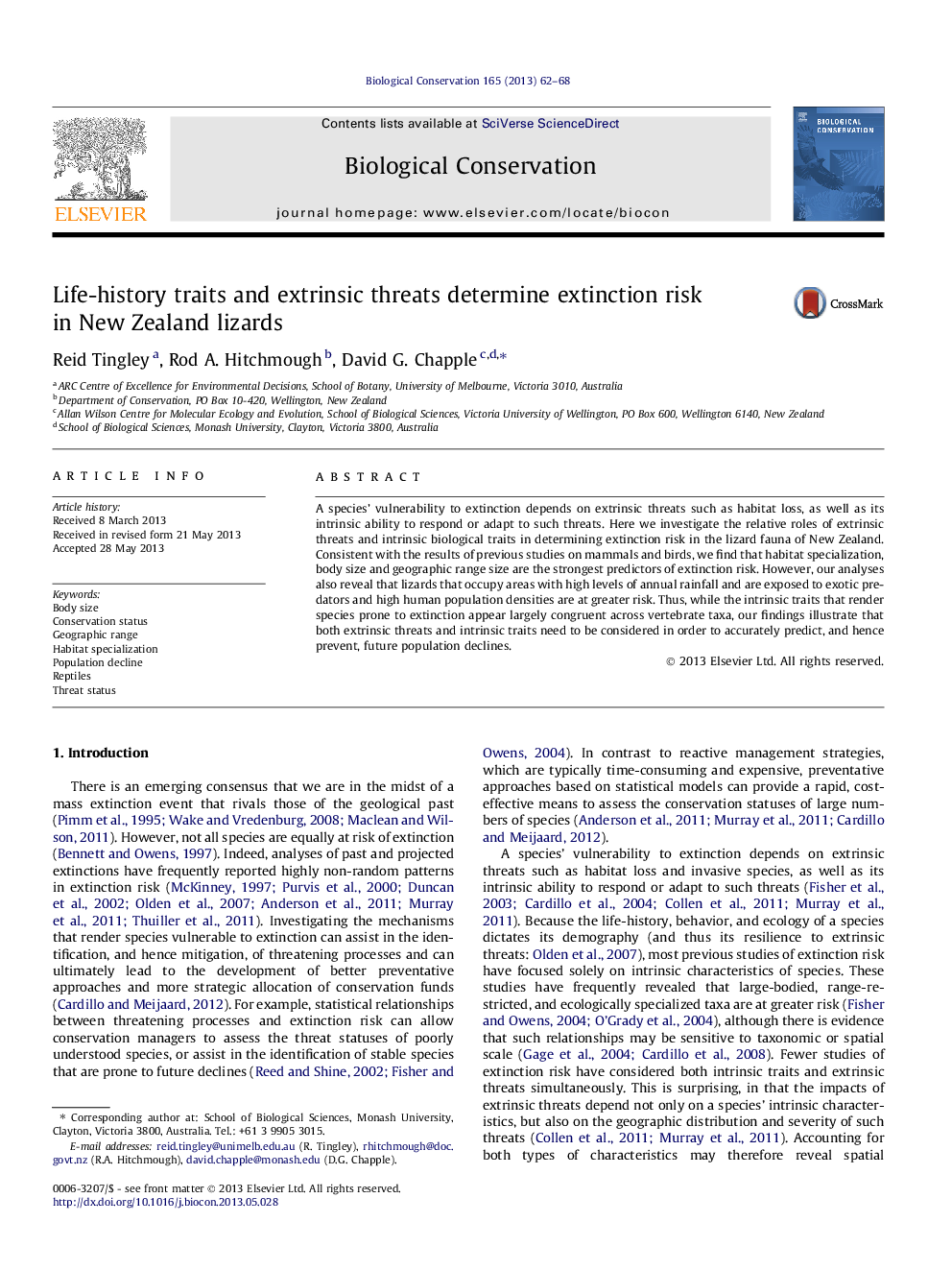| Article ID | Journal | Published Year | Pages | File Type |
|---|---|---|---|---|
| 6300850 | Biological Conservation | 2013 | 7 Pages |
Abstract
A species' vulnerability to extinction depends on extrinsic threats such as habitat loss, as well as its intrinsic ability to respond or adapt to such threats. Here we investigate the relative roles of extrinsic threats and intrinsic biological traits in determining extinction risk in the lizard fauna of New Zealand. Consistent with the results of previous studies on mammals and birds, we find that habitat specialization, body size and geographic range size are the strongest predictors of extinction risk. However, our analyses also reveal that lizards that occupy areas with high levels of annual rainfall and are exposed to exotic predators and high human population densities are at greater risk. Thus, while the intrinsic traits that render species prone to extinction appear largely congruent across vertebrate taxa, our findings illustrate that both extrinsic threats and intrinsic traits need to be considered in order to accurately predict, and hence prevent, future population declines.
Keywords
Related Topics
Life Sciences
Agricultural and Biological Sciences
Ecology, Evolution, Behavior and Systematics
Authors
Reid Tingley, Rod A. Hitchmough, David G. Chapple,
